9K38 Igla
| Igla | |
|---|---|
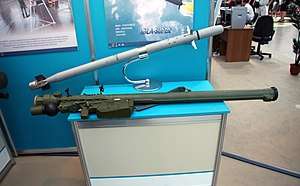 9K338 Igla-S (SA-24) missile and launch tube. | |
| Type | Man-portable air-defense systems (MANPADS) |
| Place of origin | Soviet Union |
| Service history | |
| In service | 1981–present |
| Used by | See Operators |
| Wars | Gulf War, Cenepa War, Yugoslav Wars, Bosnian War, Iraq War, Second Chechen War, Somali Civil War, First Libyan Civil War, Syrian Civil War,[1]Ukrainian Crisis (War in Donbass), Insurgency in Egypt (2013–present) (Sinai insurgency), Kurdish-Turkish conflict (2015-present) |
| Production history | |
| Manufacturer | KB Mashinostroyeniya – developer of the system |
| Produced | 1981–present |
| Specifications | |
| Weight | Missile weight: 10.8 kg (24 lb), Full system: 17.9 kg (39 lb) |
| Length | 1.574 m (5.16 ft) |
| Diameter | 72 mm |
| Warhead | 1.17 kg (2.6 lb) with 390 g (14 oz) explosive |
Detonation mechanism | contact and grazing fuzes |
|
| |
| Engine | solid fuel rocket motor |
Operational range | 5.2 km (3.2 mi) |
| Flight ceiling | 3.5 km (11,000 ft) |
| Speed | 570m/s[2] (peak), about Mach 1.9 |
Guidance system | dual waveband infra-red (S-version)[3] |
The 9K38 Igla (Russian: Игла́, "needle", NATO reporting name SA-18 Grouse) is a Russian/Soviet man-portable infrared homing surface-to-air missile (SAM). A simplified, earlier version is known as the 9K310 Igla-1, or SA-16 Gimlet, and the latest variant is the 9K338 Igla-S (SA-24 Grinch).
The Igla-1 entered service in 1981, the Igla in 1983, and the Igla-S in 2004.[4] The Igla is being supplemented by the 9K333 Verba since 2014.[5]
History
The development of the Igla short-range man-portable air defense system (MANPADS) began in the Kolomna OKB in 1972. Contrary to what is commonly reported, the Igla is not an improved version of the earlier Strela family (Strela-2 and Strela-3), but an all-new project. The main goals were to create a missile with better resistance to countermeasures and wider engagement envelope than the earlier Strela series MANPADS systems.
Technical difficulties in the development quickly made it obvious that the development would take far longer than anticipated, however, and in 1978 the program split in two: while the development of the full-capability Igla would continue, a simplified version (Igla-1) with a simpler IR seeker based on that of the earlier Strela-3 would be developed to enter service earlier than the full-capability version could be finished.
Igla-1
The 9K310 Igla-1 system and its 9M313 missile were accepted into service in the Soviet army on 11 March 1981. The main differences from the Strela-3 included an optional Identification Friend or Foe system to prevent firing on friendly aircraft, an automatic lead and super elevation to simplify shooting and reduce minimum firing range, a slightly larger rocket, reduced drag and better guidance system extend maximum range and improve performance against fast and maneuverable targets, an improved lethality on target achieved by a combination of delayed impact fuzing, terminal maneuver to hit the fuselage rather than jet nozzle, an additional charge to set off the remaining rocket fuel (if any) on impact, an improved resistance to infrared countermeasures (both decoy flares and ALQ-144 series jamming emitters), and slightly improved seeker sensitivity.

The seeker has two detectors – a cooled MWIR InSb detector for detection of the target and uncooled PbS SWIR detector for detection of IR decoys (flares). The built-in logic determines whether the detected object is a target or a decoy. The latest version (Igla-S) is reported to have additional detectors around the main seeker to provide further resistance against pulsed IRCM devices commonly used on helicopters.
The 9M313 missile features an aerospike mounted on a tripod (Igla's 9M39 missile has aerospike attached directly to the seeker dome), which reduces a shock wave, thus providing less dome heating and greater range. The name Igla is derived from these devices.
Like many other MANPADS, Igla-1 and Igla feature so-called rolling airframe missiles. These missiles roll in flight (900 – 1200 rpm) so steering the missile requires just a single pair of control surfaces, unlike roll-stabilized missiles, which require separate control surfaces for pitch and yaw. Both 9M313 and 9M39 missiles contain a gas generator, which drives a small gas turbine to provide electrical power, and the pistons, which move the canards used to steer the missile in a bang-bang mode. In addition to that, two exhaust tubes of the gas generator are placed perpendicular to the steering canards to provide maneuverability immediately after launch when the missile airspeed is too low for canards to be effective. Later versions of Igla are reported to use proportional control to drive the canards, which enables greater precision and less oscillation of the flight path.
According to the manufacturer, South African tests have shown the Igla's superiority over the contemporary (1982 service entry) but smaller and lighter American FIM-92A Stinger missile. According to Kolomna OKB, the Igla-1 has a Pk (probability of kill) of 0.30 to 0.48 against unprotected targets which is reduced to 0.24 in the presence of decoy flares and jamming.[6] In another report, the manufacturer claimed a Pk of 0.59 against an approaching and 0.44 against receding F-4 Phantom II fighter not employing infrared countermeasures or evasive maneuvers.[7]
Igla
The full-capability 9K38 Igla with its 9M39 missile was finally accepted into service in the Soviet Army in 1983. The main improvements over the Igla-1 included much improved resistance against flares and jamming, a more sensitive seeker, expanding forward-hemisphere engagement capability to include straight-approaching fighters (all-aspect capability) under favourable circumstances, a slightly longer range, a higher-impulse, shorter-burning rocket with higher peak velocity (but approximately same time of flight to maximum range).
.jpg)
The naval variant of 9K38 Igla has the NATO reporting name SA-N-10 Grouse.
The Igla–1M missile consists of a Ground Power Supply Source (GPSS), Launching Tube, Launching Mechanism & Missile (9M 313–1).
There is also a two-barrel 9K38 missile launcher called Djigit.[8]
9K388 Igla-S (SA-24 Grinch)
The newest variant, which is a substantially improved variant with longer range, more sensitive seeker, improved resistance to latest countermeasures, and a heavier warhead. Manufacturer reports hit probability of 0.8–0.9.[9] State tests were completed in December 2001 and the system entered service in 2002. Series produced by the Degtryaev plant since 1 December 2004.[3][10]
Replacement
Since 2014 the Igla is being replaced in Russian service by the new 9K333 Verba (Willow) MANPADS.[5] The Verba's primary feature is its multispectral optical seeker, using three sensors as opposed to the Igla-S' two. Cross-checking sensors against one another better discriminates between relevant targets and decoys, and decreases the chance of disruption from countermeasures, including lasers that attempt to blind missiles.[11]
Operational history
India
Operation Trishul Shakti (1992)
28 July – 3 August 1992: Indian Army launched Operation Trishul Shakti to protect the Bahadur post in Chulung when it was attacked by a large Pakistani assault team. On 1 August 1992, Pakistani helicopters were attacked by an Indian Igla missile and Brig. Masood Navid Anwari (PA 10117) then Force Commander Northern Areas and other accompanying troops were killed. This led to a loss of momentum on the Pakistani side and the assault stalled.[12]
Iraq
Desert Storm (1991)
The first combat use of the Igla-1E was during the Gulf War. On 17 January 1991, a Panavia Tornado bomber of the British Royal Air Force was shot down by an Iraqi MANPADS that may have been an Igla-1E (or Strela-3) after an unsuccessful bombing mission. The crew, Flt Lts J G Peters and A J Nichol, were both captured and held as prisoners of war (POWs) until the cessation of hostilities.[13][14]
In addition, an Igla-1E shot down an American F-16 on 27 February 1991. The pilot was captured.[15][16]
It is uncertain if an AC-130H lost was hit by a 'Strela' missile or a more recent Igla since Iraq had SA-7, SA-14 and SA-16 missiles at the time, according to the SIPRI database.
From 2003
During the Iraq War, American and coalition forces suffered a relevant number of helicopter losses. Around a third of them, around 40 aircraft were due to hostile fire, including losses to small arms fire, Anti Aircraft guns, Rocket-propelled grenades and MANPADS; any kind of combat helicopter was shot down from small observation helicopters to armoured Apache gunships. Among the losses to MANPADS, some were reported as losses to older Strela-2 (SA-7) or Strela-3 (SA-14) while others were due to more modern Igla-1E (SA-16) missiles.
Rwanda
Igla-1E missiles were used in the 1994 shoot down of a Rwandan government flight, killing the presidents of Rwanda and Burundi and sparking the Rwandan Genocide.[17]
Cenepa War
During the Cenepa War between Ecuador and Peru, both the Ecuadorian Army and the Peruvian Army (which had 90 functioning firing units) utilized Igla-1E missiles against aircraft and helicopters.
A Peruvian Air Force Mi-25 attack helicopter was shot down on 7 February 1995 around Base del Sur, killing the 3 crewmen, while an Ecuadorian Air Force A-37 Dragonfly was hit but managed to land on 11 February. Hits on additional Ecuadorian aircraft were claimed but could not be confirmed.[18]
Bosnia
During Operation Deliberate Force, on 30 August 1995; a French Mirage 2000D was shot down over Pale by an Igla fired by air defence units of the Army of Republika Srpska.[19] The pilots, Lt. Jose-Manuel Souvignet (pilot) and Capt. Frederic Chiffot (back-seater), were captured and freed in December 1995.[20]
Chechnya
The 2002 Khankala Mi-26 crash occurred on 19 August 2002 when a team of Chechen separatists brought down a Russian Mil Mi-26 helicopter in a minefield with an Igla; this resulted in the death of 127 Russian soldiers in the greatest loss of life in the history of helicopter aviation. It was also the most deadly aviation disaster ever suffered by the Russian armed forces,[21] as well as their worst loss of life in a single day since 1999.[22]
Egypt
On 26 January 2014, the militant group Ansar Bait al-Maqdis shot down an Egyptian Mi-17 over the northern Sinai peninsula using a suspected Igla-1E or Igla. How the group came to obtain the weapon is currently unknown.[23][24]
Libya
During the 2011 military intervention in Libya, Libyan loyalist forces engaged coalition aircraft with a certain number of Igla-S. Three Igla-S were fired against British Apache attack helicopters of the 656 Squadron Army Air Corps operating from the amphibious assault ship HMS Ocean. According to the squadron commander at the time, they were all dodged by insistent use of decoy flares by the gunships who in exchange successfully engaged the shooters.[25][26]
On 23 March 2015, a Libya Dawn-operated MiG-23UB was shot down with an Igla-S (reportedly a truck-mounted Strelets variant) while bombing Al Watiya airbase (near Zintan), controlled by forces from the internationally recognized Council of Deputies. Both pilots were killed.[27][28]
Plot against Air Force One
On 12 August 2003, as a result of a sting operation arranged as a result of cooperation between the American, British and Russian intelligence agencies, Hemant Lakhani, a British national, was intercepted attempting to bring what he had thought was an older-generation Igla into the United States. He is said to have intended the missile to be used in an attack on Air Force One, the American presidential plane, or on a commercial US airliner, and is understood to have planned to buy 50 more of these weapons.
After the Federalnaya Sluzhba Bezopasnosti (FSB) detected the dealer in Russia, he was approached by US undercover agents posing as terrorists wanting to shoot down a commercial plane. He was then provided with an inert Igla by undercover Russian agents, and arrested in Newark, New Jersey, when making the delivery to the undercover US agent. An Indian citizen residing in Malaysia, Moinuddeen Ahmed Hameed and an American Yehuda Abraham who allegedly provided money to buy the missile were also arrested.[29] Yehuda Abraham is President and CEO of Ambuy Gem Corp.[30][31][32] Lakhani was convicted by jury in April 2005, and was sentenced to 47 years in prison.[33]
Syria
Video has surfaced showing rebels using an Igla-1E on a Syrian government helicopter. Such weapons were believed to have been looted from a Syrian army base in Aleppo in February 2013. In 2014, a member of the rebel group Harakat Hazm was filmed aiming an Igla-1E into the air on the same day that the group was filmed operating BGM-71 TOW missiles.[34] Whether these weapons were raided from regime stockpiles or supplied via overseas is unknown.[35] However, Russia reportly denied Syrian demand for Iglas in 2005 and 2007, fearing these weapons to be used by Hezbollah.[36]
Ukraine
On 14 June 2014, rebel forces near Luhansk International Airport in Eastern Ukraine shot down an IL-76 of the Ukrainian Airforce probably using an Igla MANPADS, killing all 49 Ukrainian service personnel on board.[37]
Nagorno Karabakh
On 12 November 2014, Azerbaijani forces shot down an Armenian Army Mi-24 of a formation of two which were flying near the Azerbaijani border. All three on board died when the helicopter crashed while flying at low altitude and was hit by an Igla-S MANPADS fired by Azerbaijani soldiers.[38][39][40]
Turkey
On 13 May 2016, PKK militants shot down a Turkish Army Bell AH-1W SuperCobra attack helicopter using 9K38 Igla (SA-18 Grouse) version of this missile system. The missile severed the tail section from the rest of the helicopter, causing it to fragment in midair and crash, killing the two pilots on board. The Turkish government first claimed that it fell due to technical failure before it became clear that it was shot down. The PKK later released video footage of the rocket being fired and striking the helicopter.[41]
Variants
.jpg)
Several variants of the Igla were developed for specific applications:
- Igla-1E
- Export version.
- Igla-1M
- Improved version of 9K38 Igla. Entered service in Soviet Military during the late 1980s.
- Igla-1D
- A version for paratroopers and special forces.
- Igla-1V
- Air-launched version, mainly for combat helicopters.
- Igla-1N
- A version with heavier warhead at the cost of a slight reduction in range and speed.
- Igla-1A
- Export version?
- Igla-S (SA-24 Grinch)
- Newest variant with improved range, seeker, resistance to countermeasures, and warhead.[3][10]
- Strelets Igla-S / Igla
- The Strelets is designed for remote automated firing of the Igla and Igla-S surface-to-air missile by single shot, ripple or in salvo. In service with Syia.[42]

- 3M-47 Gibka
- A turret for ships that is equipped with Igla missiles.[43]
- Komar
- Another turret for ships that is equipped with Igla missiles.[44]
Comparison chart to other MANPADS
| 9K34 Strela-3 /SA-14 | 9K38 Igla /SA-18 | 9K310 Igla-1 /SA-16 | 9K338 Igla-S /SA-24 | FIM-92C Stinger | Grom [45] |
Starstreak [46][47] | |
|---|---|---|---|---|---|---|---|
| Service entry | 1974 | 1983 | 1981 | 2004 | 1987 | 1995 | 1997 |
| Weight, full system, ready to shoot kg (lb) |
16.0 (35.3) | 17.9 (39) | 17.9 (39) | 19 (42) | 14.3 (32) | 16.5 (36) | 20.00 (44.09) |
| Weight, missile kg (lb) |
10.3 (23) | 10.8 (24) | 10.8 (24) | 11.7 (26) | 10.1 (22) | 10.5 (23) | 14.00 (30.86)[46] |
| Weight, warhead kg (lb) g (oz) |
1.17 (2.6), 390 (14) HMX |
1.17 (2.6), 390 (14) HMX |
1.17 (2.6), 390 (14) HMX |
2.5 (5.5), 585 (20.6) HMX |
3 (6.6) HE | 1.27 (2.8) | 3x 0.90 (2.0) tungsten alloy darts, 3x 450 (16) PBX-98 |
| Warhead type | Directed-energy blast fragmentation |
Directed-energy blast fragmentation |
Directed-energy blast fragmentation |
Directed-energy blast fragmentation |
Annular blast fragmentation | Directed-energy | Directed-energy |
| Fuze type | Impact and grazing fuze. | Delayed impact, magnetic and grazing. |
Delayed impact, magnetic and grazing. |
Delayed impact, magnetic and grazing. |
Delayed impact. | Impact. | Delayed impact, armour-piercing. |
| Flight speed, average / peak m/s (mph) |
470 (1,100) sustained |
600 (1,300) / 800 (1,800) |
570 (1,300) sustained (in + temperature) |
? | 700 (1,600) / 750 (1,700) |
580 (1,300) / 650 (1,500) |
1,190 (2,700) / 1,360 (3,000)[48] |
| Maximum range m (ft) |
4,100 (13,500) | 5,200 (17,100) | 5,000 (16,000) | 6,000 (20,000) | 4,500 (14,800) | 5,500 (18,000) | 7,000 (23,000)+ |
| Maximum target speed, receding m/s (mph) |
260 (580) | 360 (810) | 360 (810) | 400 (890) | ? | 320 (720) | ? |
| Maximum target speed, approaching m/s (mph) |
310 (690) | 320 (720) | 320 (720) | 320 (720) | ? | 360 (810) | ? |
| Seeker head type | Nitrogen-cooled, lead sulfide (PbS) |
Nitrogen-cooled, Indium antimonide (InSb) and uncooled lead sulfide (PbS) |
Nitrogen-cooled, Indium antimonide (InSb) |
? | Argon-cooled, Indium antimonide (InSb) |
? | SACLOS and SALH |
| Seeker scanning | FM-modulated | FM-modulated | FM-modulated | FM-modulated | FM-modulated | FM-modulated | Low intensity modulated-laser-homing darts |
| Seeker notes | Aerospike to reduce supersonic wave drag |
Tripod-mounted nosecone to reduce supersonic wave drag |
Low laser beam energy levels ensuring no warning to target |
Operators
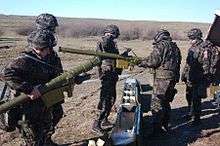
Igla and Igla-1 SAMs have been exported from the former Soviet Union to over 30 countries, including Angola, Bosnia and Herzegovina, Botswana, Brazil, Bulgaria (former producer), Croatia, Cuba, East Germany, Egypt, Ecuador, Eritrea, Finland, Hungary, India, Iran, Iraq, the Republic of Macedonia, Malaysia, Mexico, Morocco, North Korea, Peru, Poland, Serbia, Singapore, Slovakia, Slovenia, South Korea, Sri Lanka, Thailand, Turkey, United Arab Emirates, Vietnam and Zimbabwe. Several guerrilla and terrorist organizations are also known to have Iglas. Alleged Operatives of the Liberation Tigers of Tamil Eelam a rebel organization fighting for a homeland for Tamils in the island of Sri Lanka were arrested in August 2006 by undercover agents of the FBI posing as arms dealers, while trying to purchase the Igla. In 2003 the unit cost was approximately US$60,000–80,000.
Large numbers have been sold to the government of Venezuela, raising United States concerns that they may end up in the hands of Colombian guerillas.[49] Photo evidence of the truck mounted twin version in service with the Libyan Army emerged in March 2011. 482 Igla-S missiles were imported from Russia in 2004. Some were unaccounted at the end of the civiil war and they could have ended up in Iranian inventory.[50][51][52] Israeli officials say Igla-S systems were looted from Libyan warehouses in 2011 and transported by Iranians through Sudan and turned over to militants in Gaza and Lebanon.[53]
Igla-1E (SA-16)
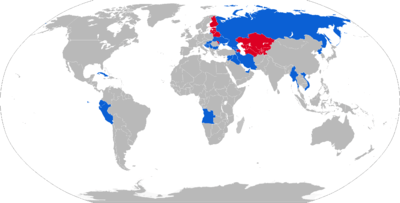
Current operators





















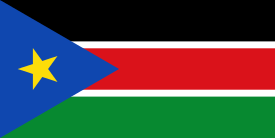






Former operators


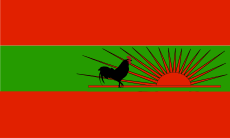

Evaluation-only operators
Igla (SA-18)
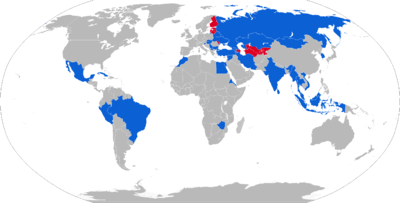
Current operators

































Former operators



Igla-S (SA-24)

Current operators







.svg.png)



Failed bids

Other uses
- The GLL Igla is a recent Russian scramjet project conducted by TsIAM.
See also
References
- ↑ Hollybats (16 December 2014). "Isis Syria War FSA fire an Igla SAM at a regime aircraft over Nebbel 16.12.2014" – via YouTube.
- ↑ SA-18 Grouse 9K38 Igla man-portable missile technical data sheet specifications description pictures | Russia Russian army light heavy weapons UK | Russia Russian army military equipment vehicles UK. Armyrecognition.com (18 December 2011). Retrieved on 2017-01-06.
- 1 2 3 "9К338 Игла-С – SA-24 GRINCH". Retrieved 14 November 2014.
- ↑ 9K338 9M342 Igla-S / SA-24 Grinch. Globalsecurity.org. Retrieved on 6 January 2017.
- 1 2 New Russian Verba MANPADS will replace Igla-S Archived 26 June 2015 at the Wayback Machine. - Armyrecognition.com, 15 September 2014
- ↑ ""Игла-1" и "Игла" / Оружие современной пехоты. Иллюстрированный справочник Часть II". www.nnre.ru. Retrieved 2017-07-04.
- ↑ Witcher, Glenn. "Отечественные ПЗРК: "Иглы"". Военное обозрение (in Russian). Retrieved 2017-07-04.
- ↑ DJIGIT (SA-18). warfare.be
- ↑
- 1 2 "Российский переносной ЗРК "Игла-Супер" – оружие предупреждения атак с воздуха". Retrieved 14 November 2014.
- ↑ New-generation man-portable air defence system Verba revealed to public at Army 2015 exhibition – Armyrecognition.com, 19 June 2015
- ↑ Harish Kapadia. Siachen Glacier: The Battle of Roses. Rupa Publications Pvt. Ltd. (India).
- ↑ Lawrence, Richard R.. Mammoth Book Of How It Happened: Battles, Constable & Robinson Ltd, 2002.
- ↑ Statement on the Loss of RAF Tornado Aircraft in Combat During the Conduct of Air Operations against Iraq Archived 11 October 2011 at the Wayback Machine.. Raf.mod.uk. Retrieved on 6 January 2017.
- ↑ "Aircraft Database on F-16.net" Aircraft profile records for Tail 84-1390. Retrieved: 11 May 2011.
- ↑ " Russia's Strela and Igla portable killers" Archived 7 October 2008 at the Wayback Machine.. a digital copy of an article from Journal of Electronic Defense, January 2004 by Michal Fiszer and Jerzy Gruszczynski. Retrieved: 15 June 2009.
- ↑ The Continuing Threat of Libyan Missiles. Stratfor. Retrieved on 6 January 2017.
- ↑ Cooper, Tom. "Peru vs. Ecuador; Alto Cenepa War, 1995". ACIG.org. Retrieved 18 February 2013.
- ↑ Fulghum, David A. (14 January 2010) Anti-Aircraft Missiles Stolen by Guerrillas in Peru. Aviation Week
- ↑ "Serbs free two French pilots". USA Today.
- ↑ Chechen gets life for killing 127 Russian soldiers, The Guardian, 30 April 2004
- ↑ A calamity, yet no end of war in sight, The Economist, 22 August 2002
- ↑ Binnie, Jeremy. "Egyptian militants downed helo with Igla-type MANPADS". IHS Jane's 360. Retrieved 7 April 2014.
- ↑ Militants Down Egyptian Helicopter, Killing 5 Soldiers. LiveLeak.com (26 January 2014). Retrieved on 2017-01-06.
- ↑ BOOK REVIEW – Apache Over Libya | Naval Historical Foundation. Navyhistory.org (2 September 2016). Retrieved on 2017-01-06.
- ↑ Army Apache crew members honoured for actions over Libya – Announcements. GOV.UK (26 March 2012). Retrieved on 2017-01-06.
- ↑ Binnie, Jeremy (22 March 2015) Libya Dawn aircraft crashes during raid on Zintan. London, IHS Jane's Defence Weekly
- ↑ Michael Horowitz on Twitter: "Picture: Igla manpad reportedly used to shoot down a #Libya Dawn Airplane that carried out an airstrike over Zintan http://t.co/65DONM1RRq". Twitter.com. Retrieved on 6 January 2017.
- ↑ "Three Men Charged with Smuggling Missiles". Retrieved 14 November 2014.
- ↑ "Ambuy Gem Corp". Manta. Retrieved 14 November 2014.
- ↑ "Perfil personal de ZoomInfo de Yehuda Abraham". ZoomInfo. Retrieved 14 November 2014.
- ↑ "FBI's press release". FBI. Retrieved 14 November 2014.
- ↑ "Attorney General Alberto R. Gonzales Highlights Success in the War on Terror at the Council on Foreign Relations". US Department of Justice. 1 December 2005. Retrieved 17 August 2013.
- ↑ "حركة حزم التصدي للطيران الحربي فوق بلدة حيش".
- ↑ "A new weapon on the Syrian battlefield".
- ↑ Small Arms Survey (2015). "Trade Update: After the 'Arab Spring'" (PDF). Small Arms Survey 2015: weapons and the world (PDF). Cambridge University Press. p. 107.
- ↑ Luhn, Alec (14 June 2014). "Bloodiest day in Ukraine conflict as rebel missiles bring down military jet". Observer. Retrieved 14 June 2014.
- ↑ "BBC News – Azerbaijan downs Armenian helicopter". BBC News. Retrieved 13 November 2014.
- ↑ Harro Ranter. "ASN Aircraft accident 12-NOV-2014 Mil Mi-24". Retrieved 13 November 2014.
- ↑ "Ağdamda helikopterin vurulma anı (həqiqi görüntülər)". YouTube. Retrieved 13 November 2014.
- ↑ Cunningham, Erin. (14 May 2016) Kurdish militants reportedly shoot down Turkish security forces helicopter. The Washington Post. Retrieved on 2017-01-06.
- ↑ Sputnik. "WATCH: Syrian Military Showcases Russian-Made Air Defense Systems". sputniknews.com.
- ↑ (in French) Gibka Ghibka 3M-47 3M47 Гибка naval turret mount air defense missile system Igla 9М39 9М342 9K310 9M310 9M313 Igla-1 Igla-M SA-16 SA-N-10 Gimlet close in weapon system CIWS datasheet pictures photos video specifications. Navyrecognition.com. Retrieved on 6 January 2017.
- ↑ Novichkov, Nikolai (5 July 2015) Russia to equip Buyan-M corvettes with Komar SAM turret. St Petersburg, IHS Jane's Navy International
- ↑ Kwasek, Tomasz (18 August 2011) Przeciwlotniczy zestaw rakietowy PPZR Grom i Piorun. dziennikzbrojny.pl
- 1 2 StarStreak High Velocity Missile (HVM) Archived 4 March 2016 at the Wayback Machine.. thalesgroup.com
- ↑ STARSTREAK Armoured Vehicle System (AVS) Archived 7 January 2017 at the Wayback Machine.. thalesgroup.com
- ↑ Starstreak – Close Air Defence Missiles Archived 4 March 2016 at the Wayback Machine.. Defencejournal.com. Retrieved on 6 January 2017.
- ↑ Forero, Juan (15 December 2010). "Venezuela acquired 1,800 Russian antiaircraft missiles in '09". The Washington Post. Retrieved 15 December 2010.
leak
- ↑ SA-24 Grinch 9K338 Igla-s portable air defense missile system technical data sheet specifications UK. Army Recognition (23 March 2011). Retrieved on 2017-01-06.
- ↑ Coughlin, Con (22 September 2011). "Iran 'steals surface-to-air missiles from Libya'". The Daily Telegraph. London.
- ↑ The deadly dilemma of Libya's missing weapons. CSMonitor.com (7 September 2011). Retrieved on 2017-01-06.
- ↑ Fulghum, David (13 August 2012). "Israel's Long Reach Exploits Unmanned Aircraft". Aviation Week & Space Technology.
- 1 2 3 "Guided light weapons reportedly held by non-state armed groups 1998-2013" (PDF). Small Arms Survey. March 2013.
- ↑ Martin, Guy. "Botswana - defenceWeb". www.defenceweb.co.za.
- 1 2 3 Small Arms Survey 2004, p. 82.
- ↑ "Archived copy". Archived from the original on 21 April 2017. Retrieved 21 April 2017.
- ↑ Small Arms Survey 2004, p. 83.
- ↑ Small Arms Survey (2012). "Blue Skies and Dark Clouds: Kazakhstan and Small Arms" (PDF). Small Arms Survey 2012: Moving Targets. Cambridge University Press. p. 131. ISBN 978-0-521-19714-4.
- 1 2 3 4 Small Arms Survey 2004, p. 87.
- 1 2 Small Arms Survey (2004). "Big Issue, Big Problem?: MANPADS" (PDF). Small Arms Survey 2004: Rights at Risk. Oxford University Press. p. 81.
- ↑ Military Balance 2017
- ↑ Small Arms Survey 2004, p. 89.
- ↑ "Thống kê hợp đồng mua sắm đạn dược của Việt Nam". Retrieved 14 November 2014.
- ↑ "SA-16 (Gimlet) / 9K310 Igla-1 Man-Portable, Shoulder-Launched Anti-Aircraft Missile System - Soviet Union".
- ↑ https://www.files.ethz.ch/isn/160759/BICC_brief_47.pdf
- ↑ Small Arms Survey (2008). "Light Weapons: Products, Producers, and Proliferation" (PDF). Small Arms Survey 2008: Risk and Resilience. Cambridge University Press. p. 13. ISBN 978-0-521-88040-4.
- ↑ Stockholm International Peace Research Institute – Trade Register, entries for Armenia 2013. Retrieved 16 May 2015
- ↑ http://tass.com/world/1014422
- ↑ APA – List of weapons and military vehicles sold by Russia to Azerbaijan last year publicized Archived 22 June 2013 at the Wayback Machine.. En.apa.az (19 June 2013). Retrieved on 2017-01-06.
- ↑ Blanchard, Christopher M.; Humud, Carla E. (February 2, 2017). "The Islamic State and U.S. Policy" (PDF). Congressional Research Service.
- ↑ Chivers, C.J. (13 November 2012). "Possible Score for Syrian Rebels: Pictures Show Advanced Missile Systems". The New York Times. Retrieved 15 November 2012.
- ↑ จรวดต่อสู้อากาศยาน SA-24 Grinch Igla-S Archived 10 June 2015 at the Wayback Machine.
- ↑ Venezuela compra en Rusia sistemas portátiles de defensa antiaérea. Vedomosti | Noticias | RIA Novosti. Sp.rian.ru (19 November 2008). Retrieved on 2017-01-06.
- ↑ ’Kẻ hủy diệt’ trực thăng của Phòng không Việt Nam – ’Ke huy diet’ truc thang cua Phong khong Viet Nam – DVO – Báo Đất Việt. Baodatviet.vn (14 March 2013). Retrieved on 2017-01-06.
- ↑ "Gromy nie dla Finlandii - DziennikZbrojny.pl".
External links
| Wikimedia Commons has media related to 9K38 Igla. |